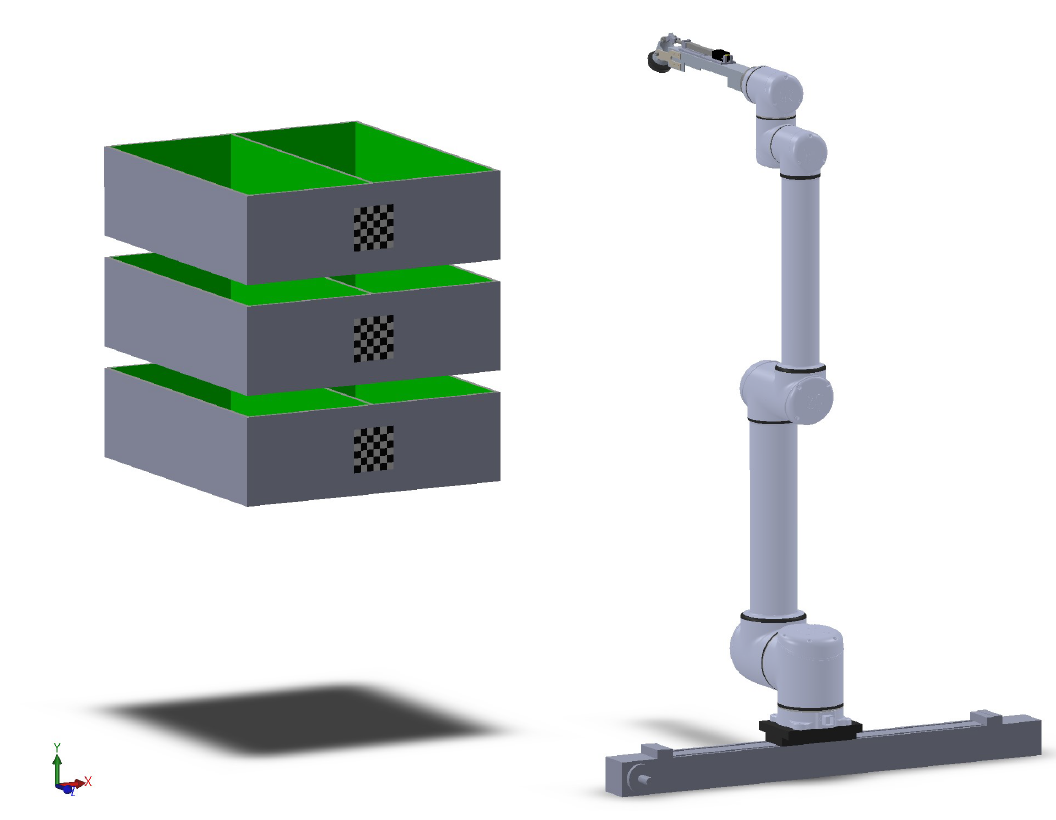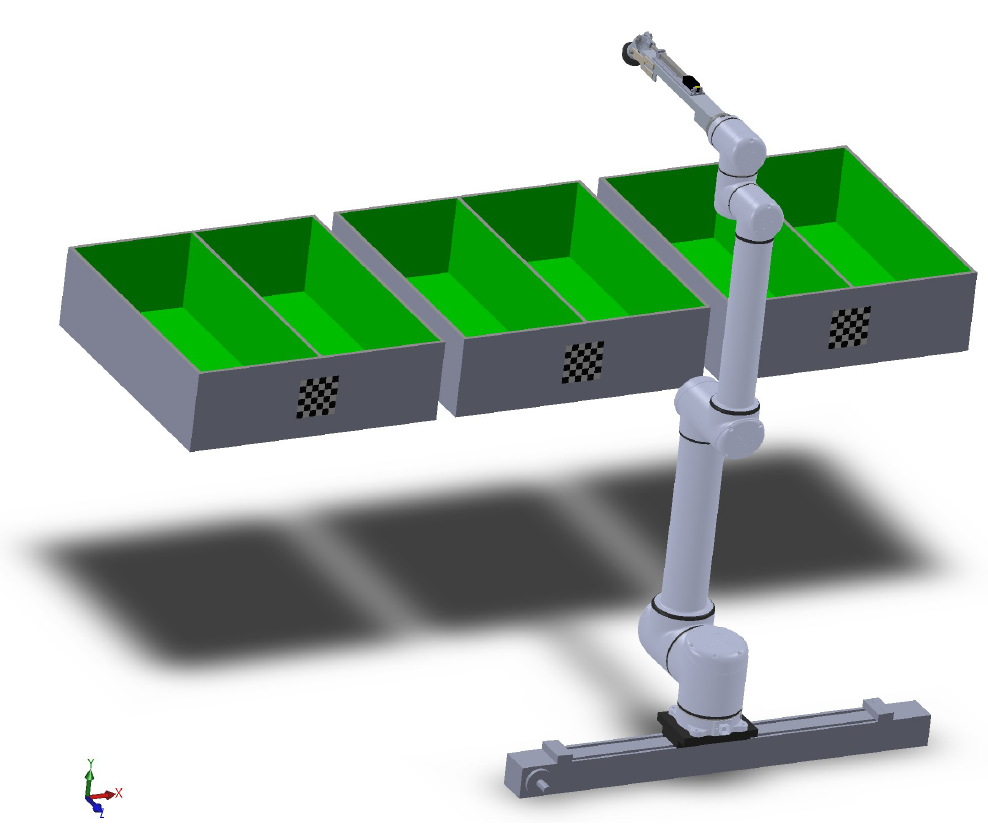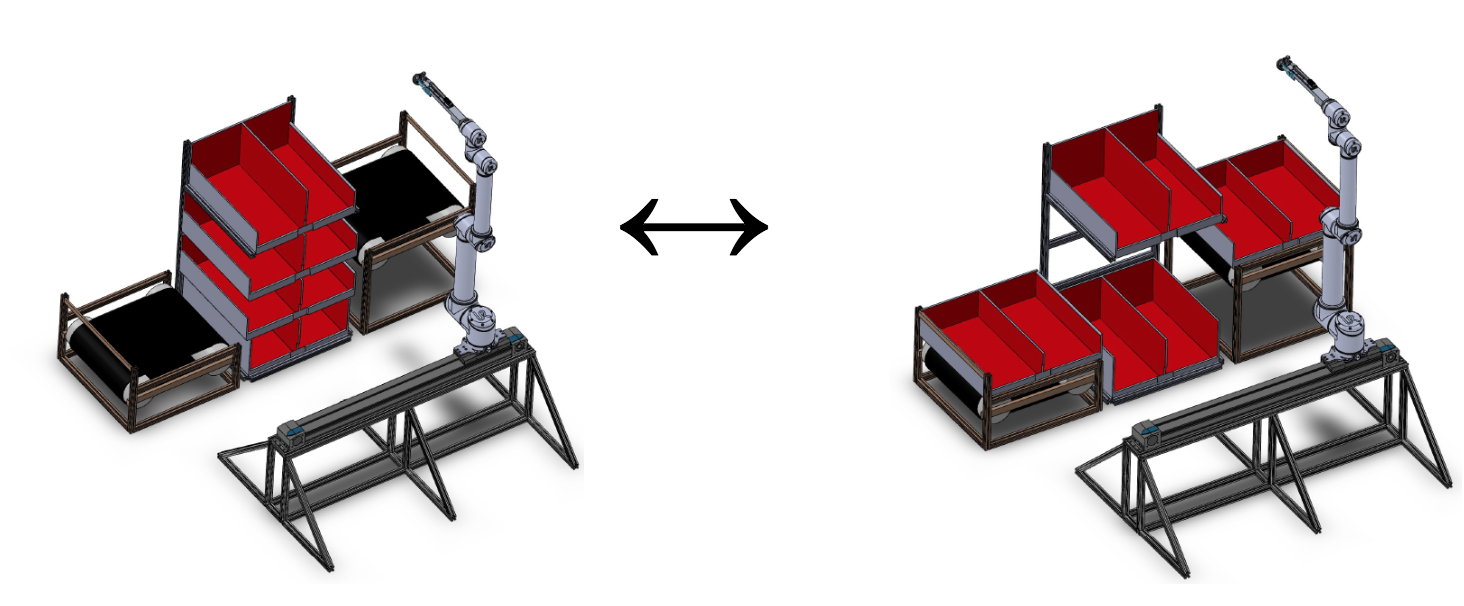A new aspect for the challenge is shelf design. The shelf must occupy a floor space of 5000 cm^2. Placing AprilTags on each drawer also allows for easy localization.


The shelving system design consists of 4 drawers, which are each divided into two bins. The drawers are stacked vertically, and the second and third bins can be moved outward. An outside frame which is unattached to the shelf attaches and actuates in order to move the drawers into their different positions. The shelving system allows for the arm to have a top-down approach to each bin, including the bottom bin which now has an empty cavity above it where the two middle drawers originally were. The frame also has the ability to provide support for any tarps or other fabric and LED strips to control system lighting.

Drawer movement will be actuated through the use of stepper motors, chains (with attachment hardware), hooks/forks, and leaf springs. The drawer will slide out on telescoping sliders attached to the shelf frame or it will move across roller casters attached to both the shelf and the actuated frame. A rough model of the drawer actuation system utilizing rollers can be seen the following figures.
The sprockets will rotate the chain counter-clockwise (looking at the front view) in order to engage the hook or fork to a pin which will be fastened within the hollow portion of the drawer. As the chain continues to rotate the drawer will be pulled out. The system will rotate clockwise in order to disengage the hook, and a leaf spring opposite the hook will begin to push the drawer back into its original position. When the drawer is in its original position the leaf spring will begin to flex, allowing for some leeway in the precision of the stepper motor control.

